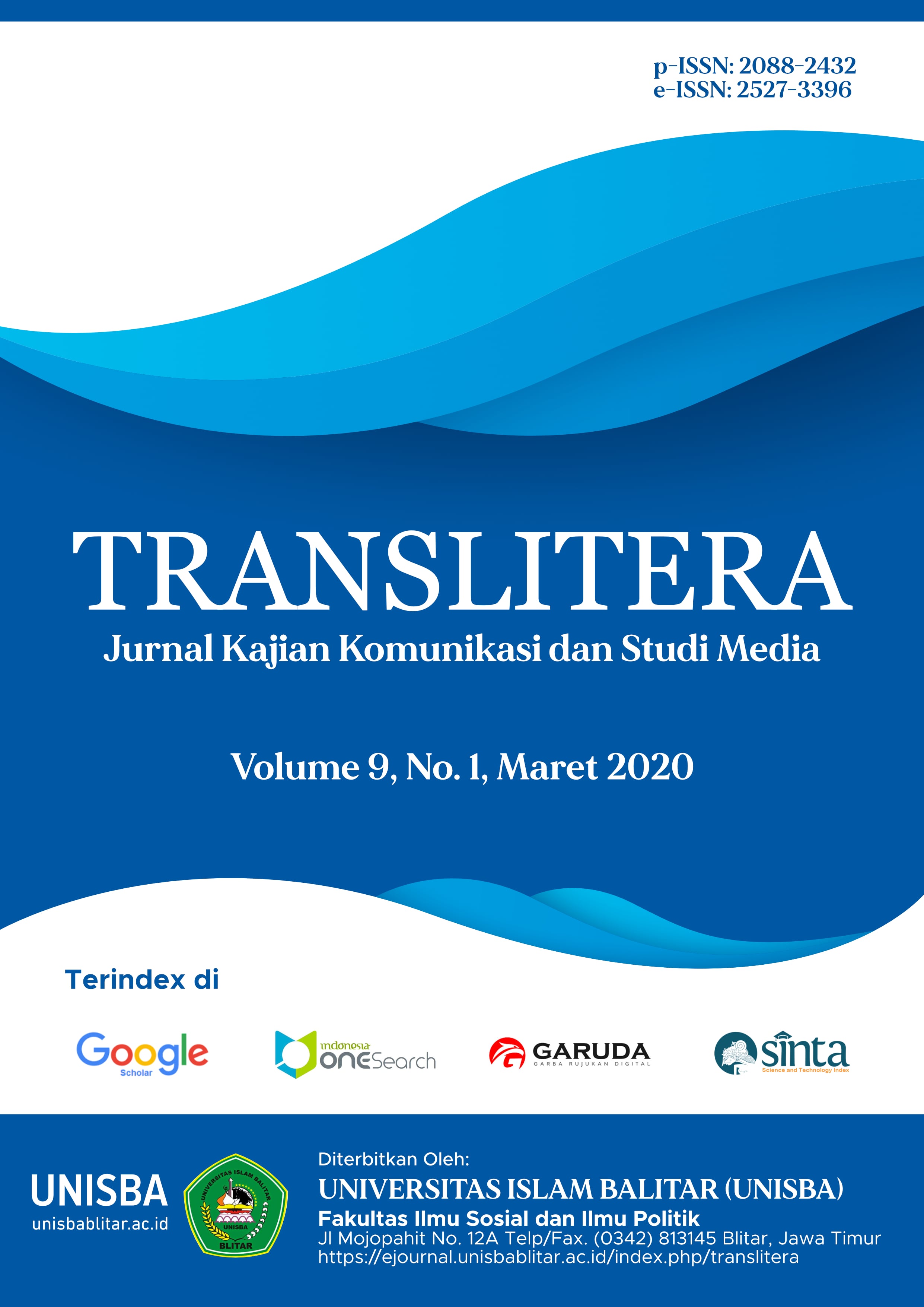REPRESENTASI PEREMPUAN PADA POSTER TEASER ALBUM K-POP BLACKPINK DAN TWICE
DOI:
https://doi.org/10.35457/translitera.v9i1.901Keywords:
Semiotic Analysis, Woman Representation, Album Poster, K-Pop.Abstract
K-Pop has become a global phenomenon. People call it Hallyu, the Korean wave which has become a major driver of global culture. It has been seen on various aspects such as drama, fashion style, makeup or skincare, and music performance. There are many Korean groups now and K-Pop agencies such as YG, JYP and SM Entertainment. BLACKPINK is one of the most famous South Korea girl groups formed by YG Entertainment. TWICE is girl group formed by JYP Entertainment. Both BLACKPINK and TWICE portrays powerful and strong concept represented in their poster album. This paper explored visual concept in BLACKPINK and TWICE poster album. Roland Barthes Semiotics analysis was conducted with qualitative approach to identify sign and symbol in order to find out the woman representation of BLACKPINK and TWICE poster album. In conclusion, it was found that BLACKPINK and TWICE poster album implemented girl power and duality concept of black and pink while TWICE implemented youth concept which has cheerful and energetic character.
References
Brady, Chris.(2015). A Multimodal Discourse Analysis of Female K-Pop Music Videos. United Kingdom: University of Birmingham.
Curtin, Brian. (2009). Semiotics and Visual Representation.
Herman, Tamar. (2018). BLACKPINK’s “Ddu-Du Ddu-Du” Becomes Most Viewed Korean Music Video in 24 Hours on You Tube. https://www.billboard.com/articles/columns/k-town/8464130/blackpink-youtube-record-ddu-du-ddu-du-video. Accesed on October 20, 2019
Jung, Sookeung & Li, Hongmei. (2014). Global Production, Circulation, and Consumption of Gangnam Style. International Journal of Communication 8, 2790-2810.
Kim, Dianne. (2018). Chic and Confident: Why BLACKPINK’s “Ddu-Du Ddu-Du” MV Has Us Shook. https://www.soompi.com/article/1185995wpp/chic-confident-things-love-blackpinks-dududu-mv. Accesed on October 20, 2019.
Kim, Gooyong. (2017). Between Hybridity and Hegemony in K-Pop’s Global Popularity: A Case of Girls’s Generation’s American Debut. International Journal of Communication 11, 2367-2386.
Negus, Keith. (2015). The South Korean Music Industry: A Literature Review. CREATe Working Paper
Oh, Ingyu & Jung Lee, Hyo. (2013). K-Pop in Korea: How the Pop Music Industry is Changing a Post Developmental Society. Cross-Currents: East Asian History and Culture Review, 105-124.
Oh, Ingyu & Jung Lee, Hyo. (2013). Mass Media Technologies and Popular Music Genres: K-Pop and YouTube*. Korean Journal Vol 53 no 4, 34-58.
Rae, Kim Bok. (2015). Past, Present and Future of Hallyu (Korean Wave). American International Journal of Contemporary Research. 154-160.
Shin, Ryan. (2016). Gangnam Style and Global Visual Culture. Journal Studies in Art Education vol 57, issue 3, 252-264.
Yong Jin, Dal & Jin Yoon, Tae. (2017). The KoreanWave: Retrospect and Prospect. International Journal of Communication 11, 2241-2249.

Downloads
Published
Issue
Section
License
Authors who publish with this journal agree to the following terms:
- Copyright on any article is retained by the author(s).
- Author grant the journal, right of first publication with the work simultaneously licensed under a Creative Commons Attribution License that allows others to share the work with an acknowledgement of the work’s authorship and initial publication in this journal.
- Authors are able to enter into separate, additional contractual arrangements for the non-exclusive distribution of the journal’s published version of the work (e.g., post it to an institutional repository or publish it in a book), with an acknowledgement of its initial publication in this journal.
- Authors are permitted and encouraged to post their work online (e.g., in institutional repositories or on their website) prior to and during the submission process, as it can lead to productive exchanges, as well as earlier and greater citation of published work.
- The article and any associated published material is distributed under the Creative Commons Attribution-ShareAlike 4.0 International License











